Rippled Cornish Chert Flint necklace
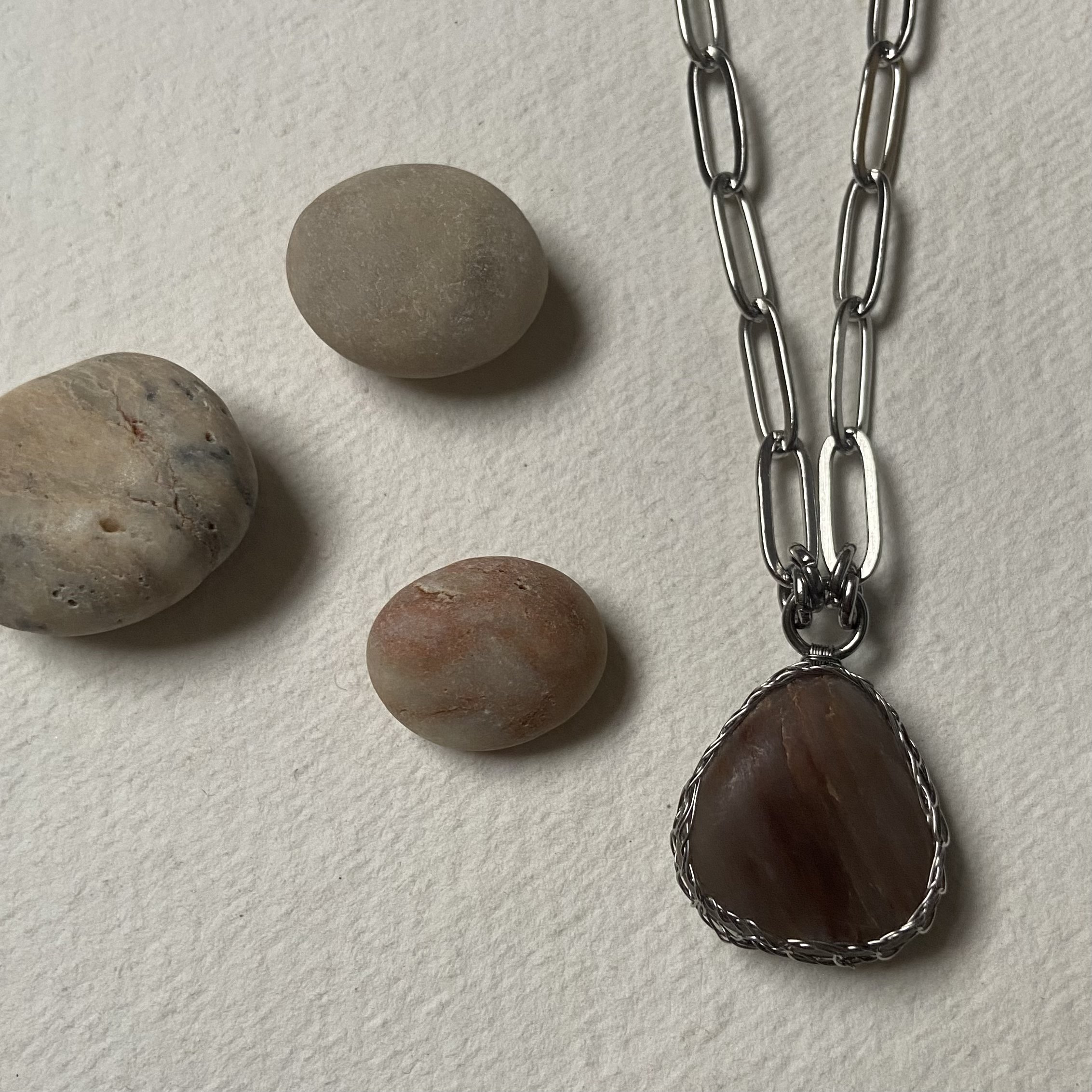
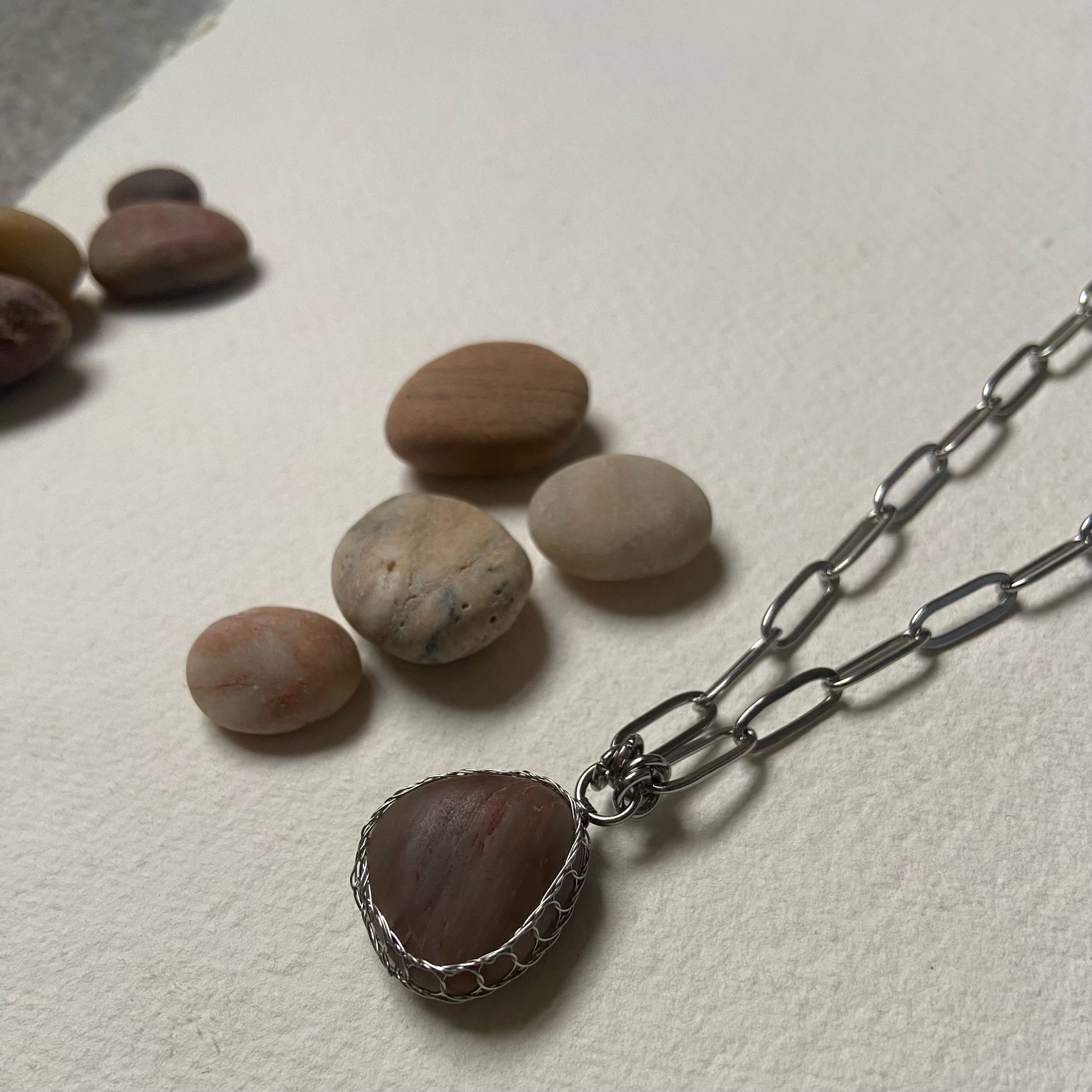
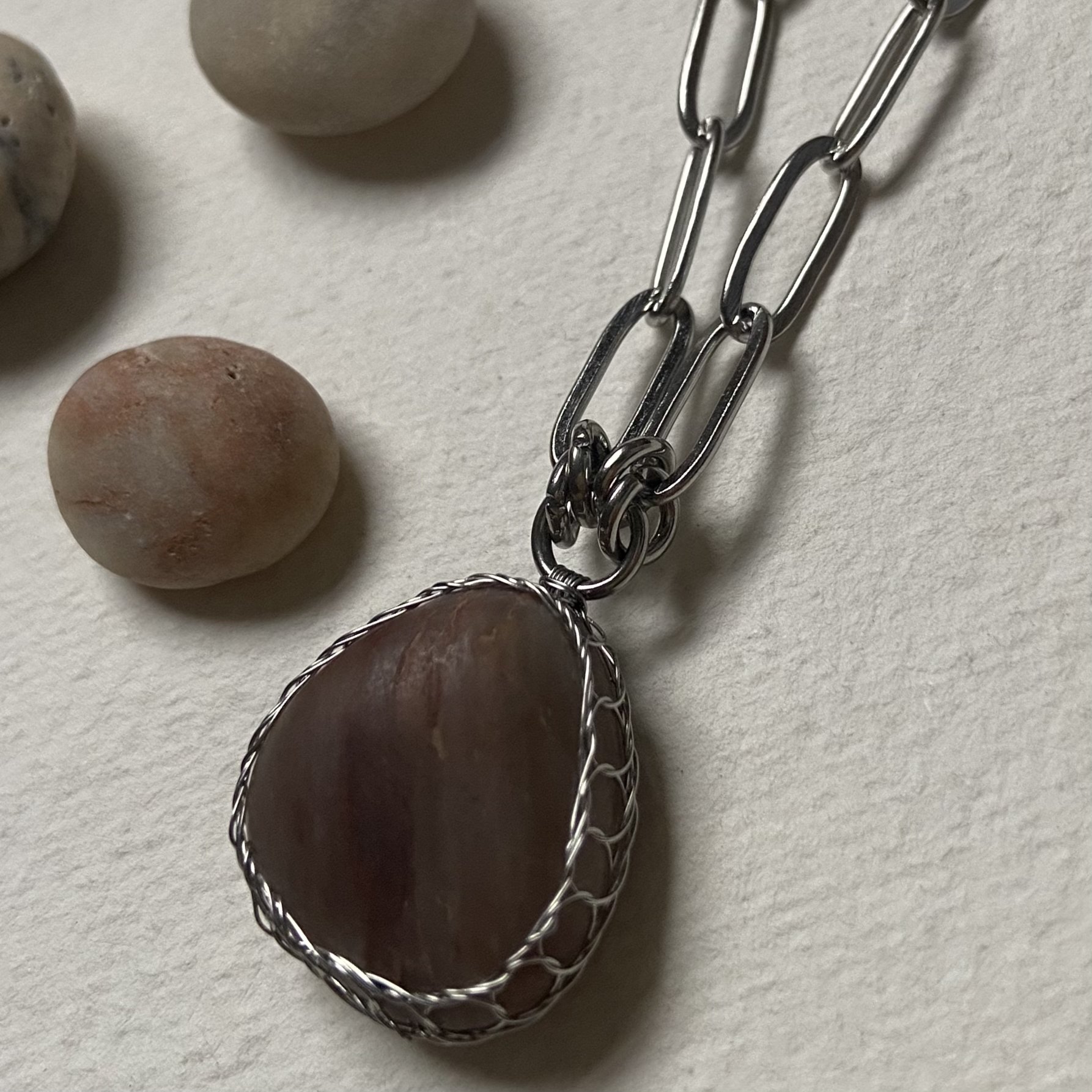
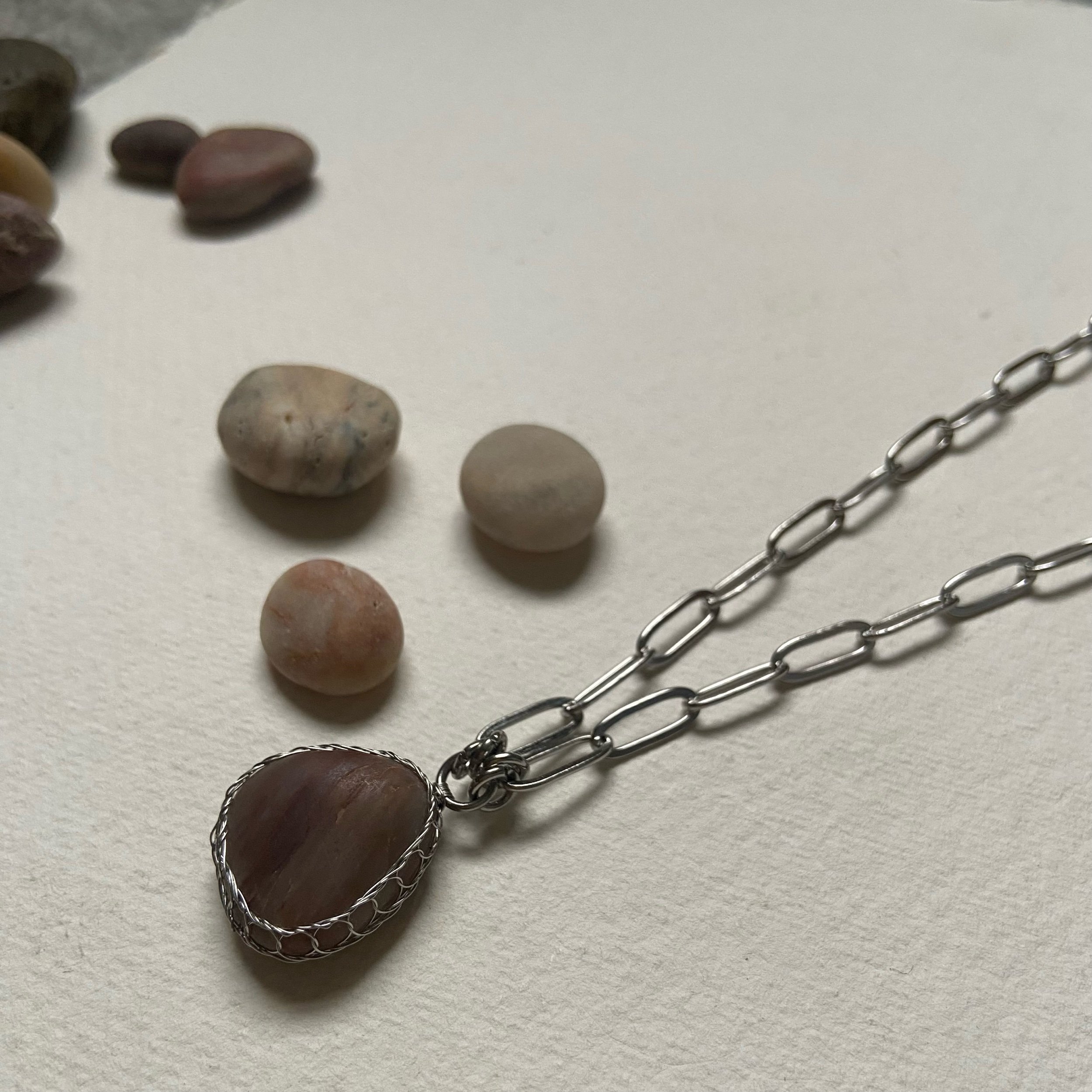

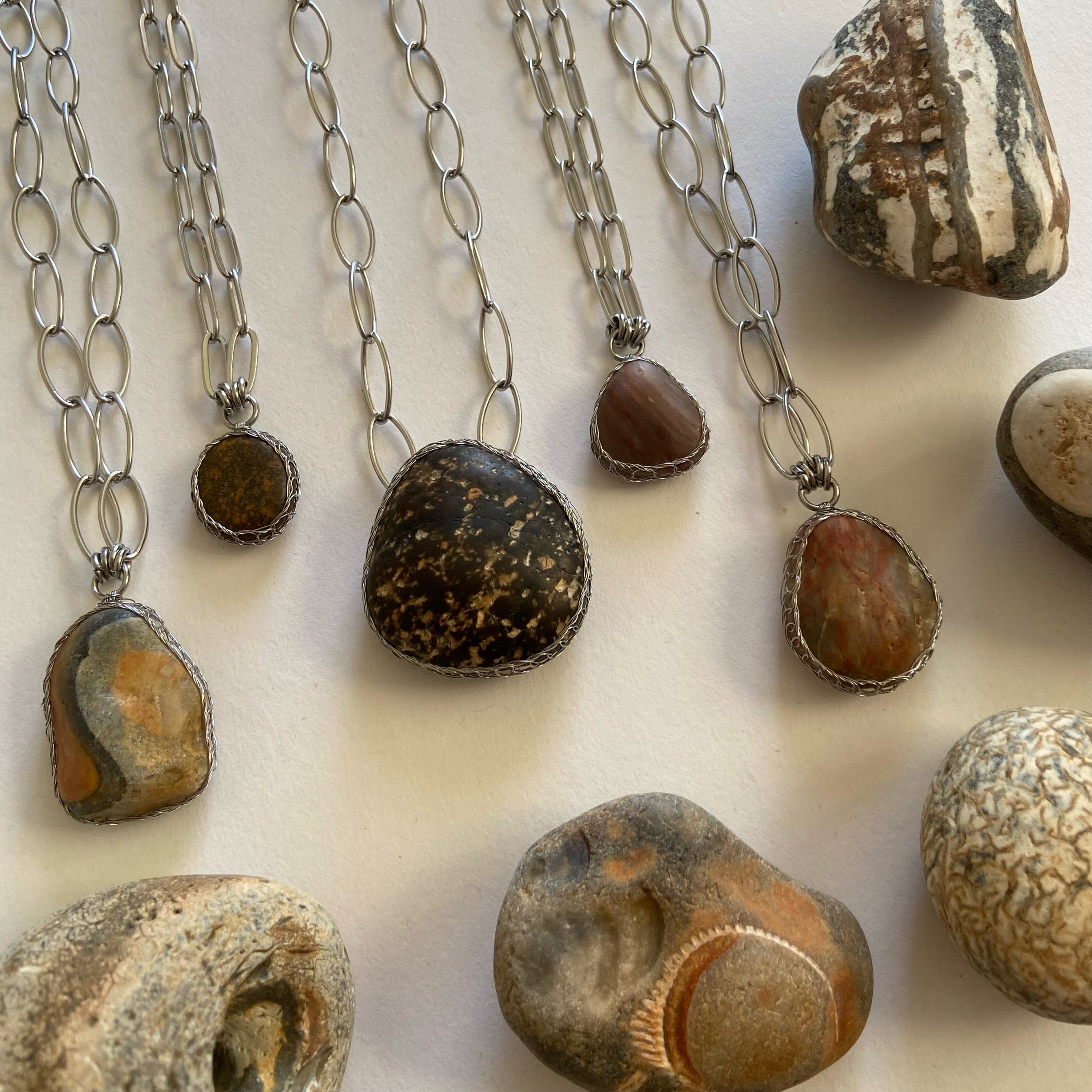
Rippled Cornish Chert Flint necklace
A stunning rippled chert. I wasn’t sure if this was another banded flint, but I don’t think the stripes are as pronounced and are slightly more marbled, maybe more of a quartz / agate/ chalcedony make up.
Pebble has been smoothed by the sea against the sand so has a nice polished surface.
Collected from Charlestown. Cornwall.
Strangely a flint based beach where theres no limestone. Flint could be from old ship ballast or from limestone offshore.
Flint. A very under appreciated rock. Once reveered for its ability to start fire, and its resistance to wear and tear which made it perfect for fashioning tools. It flys under the radar now because we have contemporary versions of these rudimentary stones. Snazzy lighters in our pockets and tools made out of highly durable metals such as steel.
Flint is interesting because its very conception starts in pockets and crevices deep within limestone and chalk, so although it is also considered sedimentary, it is also a cryptocrytalline version of the mineral quartz, and so fits into the category of “chert”.
Nobody can agree on how flint is formed, but the general concencus is that it forms as nodules within a oreexisting soft sedimentary limestone.
These pockets and crevices in the soft rock are considered to be old burrows or tunnels made by ancient marine organisms, like molluscs or crustceans. These holes are then filled with a silica like-ozze from minerals that have precipitated in the host rock, probably from silica based organisms like sponges. This process is called diagenesis, which is similar to to what happens to rocks during metamophism, but just with lower temperatures and pressures involved. Sometimes you can actually find fossils preserved in the flint. Each piece of flint has been eroded out of the soft limestone host rock, so when you look at huge expanses of flint shingle beaches, just imagine that every single pebble was created in and weathered out of the local limestone, is this case its the stunning chalk cliffs “the white cliffs of Dover” (not that I’m anywhere near Dover but its that iconic pale looming coastline that is so famous on this part of the coast. And what about the host rock? What is that made of?! In a nut shell, billions and trillions of dead smushed up sea creatures then smushed together to form a rock. Im very scientific. 🤣
Made using a wire bezel technique I created, which is kind of a cross between basketry and weaving. It is a time consuming technique but a labour of love. Each piece of sea glass is securely and artistically encased in a delicate wire frame.
Surgical stainless steel findings. Highest quality stainless steel does not rust or tarnish, a hard wearing metal with a finish like antique sterling. Also suitable for people with metal allergies, stainless steel is used predominantly in the medical profession as people are less likely to react to it.
Necklace adjustable up to 18 inches long.
See photo of me wearing for length.
If you would prefer it on a different chain, or a different length, please get in touch for options.